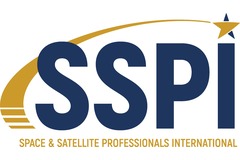


The award for Originality and Innovation went to the University of Maryland's Melissa Adams (below, right) for her project "Development of a Mobile Platform to Demonstrate the ICE-PIC End-effector for Icy Moon Exploration." Adams has been developing the mechanical understanding to create a robot which can travel across the surface of deeply cold extraterrestrial bodies such as Jupiter’s moon Europa. Her project focused on optimum number and design of the "legs" and "feet" for the robot, and she is beginning laboratory experiments to verify her analysis.
Also from the University of Maryland, Jackson Shannon (below, left) received recognition for Experimental Method, regarding his project "Preliminary Validation and Simulation of the STRATA-1 Microgravity Granular Segregation Experiment." Shannon used data gathered from an active collaborative experiment on the International Space Station, STRATA-1. He has been working to develop a mathematical model which predicts the distribution of irregular particles in zero gravity when subjected to various vibrations experienced on the ISS. The resulting model can help us understand how various sized particles form together to create objects such as asteroids, comets, moons, and planets.
For the second year in a row, SSPI-MA added a Job Fair/Industry Networking portion to the event. Companies such as SES, OneWeb, Ultisat, and DRS discussed employment and internship opportunities with students in attendance, expanding opportunities for the next generation of space and satellite industry visionaries.
The Annual Scholarship Competition offers local students the visibility, the vital feedback, and crucial financial assistance to further their careers as they begin their journey to positively affect the space and satellite industries. With help from our members, sponsors, and participants in our regular events, SSPI-MA is proud to take an active role in advancing the prospects for the next generation of industry leaders.



